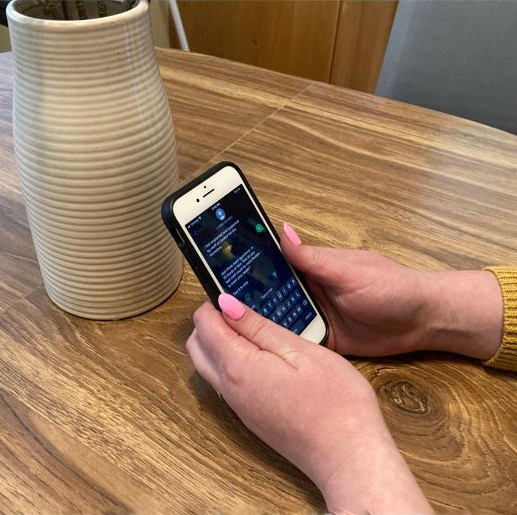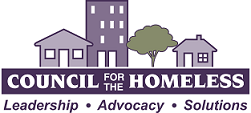By Zoë Warner, Council for the Homeless
 As a team, everyone at Council for the Homeless (CFTH) strives to make sure that all of our clients feel empowered and included, that they matter as individuals. All of this hard work is one in many ways, including data collection and analysis. We also solicit direct feedback from clients on the quality of our work.
As a team, everyone at Council for the Homeless (CFTH) strives to make sure that all of our clients feel empowered and included, that they matter as individuals. All of this hard work is one in many ways, including data collection and analysis. We also solicit direct feedback from clients on the quality of our work.
In the summer of 2020, during heavy COVID-19 times, Council for the Homeless assembled a team that created a text message survey sent out to our clients after they interacted with our staff for housing and homelessness assistance. Previously, we gathered feedback by asking clients who had been helped by CFTH to fill out a paper survey form. But feedback was difficult to gather, and responses were low, with about a 10% response rate.
When we changed to gathering data by text message, we saw an immediate improvement in the amount and quality of the feedback. By sending out surveys via text messages, we reached more clients and heard our clients’ voices on their recent experience with CFTH. Response rates have been close to 40%. We send out three different types of text messages after interacting with clients, looking for two different types of data: quantitative and qualitative. Quantitative data is measured on a 1–5 scale; 1 is “Strongly Disagree” and 5 is “Strongly Agree.” Qualitative data is collected by written responses of around 5–10 words.
One thing that we have learned is that people have a lot to say; sometimes they just need to be asked. Much of the feedback about their experiences with our team is positive. People tell us that our employees are very supportive and judgment-free, and clients have said that they felt genuinely cared for. Also, people show a lot of gratitude for us being able to help them in their time of need. Survey respondents say CFTH can improve by having more staff and more housing resources available in the community. This is important for us to hear.
This feedback immensely helps our team to better understand what aspects of serving our community are going well and which ones could be improved in our effort to provide quality services. When analyzing this data, CFTH is able to see if there are correlations between experience with our organization and race, gender, ethnicity, and age. Are we being sufficiently inclusive? Are we truly acknowledging the individual value of our clients? In this way, I believe the surveys show another form of work that we do at CFTH to promote equity and advocacy. They allow us to see our work through a different lens. Through the feedback we collect, we are able to see how much our work impacts the people we serve
The surveys provide important information to our leadership team as well. The leadership team looks over the responses and analyzes how their department is doing (what is going right and what can be improved). They can make program adjustments based on the feedback, adjustments that help us be the very best organization we can be—which is what we are all striving for.
An example is the request for additional follow-up by our staff. Experiencing homelessness is stressful and traumatic. It can be overwhelming to take in all the information when seeking assistance. Understandably, people appreciate follow-up to help them move forward. We now know our survey system can customize the timing of messages, reminders, the information sent, and to whom it is sent. It is a first step toward improved support and follow-up.
Based on the success of the text message data collection system, we have added an additional automatic text survey for clients who have been served in another of the Council’s programs. We will continue to look for new and better ways to learn about our clients’ experience with our other programs to see if anything can be improved. As part of the data collection team, my overall goal with sending surveys and analyzing feedback is to help CFTH flourish, to be the best that we can be.
This is also an example of CFTH innovation. Right now, we are one of the only organizations in the state working with the homeless population to conduct feedback surveys by text. I am hoping sometime within the next year to speak at a conference to spread awareness of this survey project, in hopes that it will inspire other agencies to do it as well. When you hear feedback from your clients, you can better help past clients, your agency, and potential future clients. I think it is really important to listen to the voices of people who aren’t always heard, because in this field and in our community the unheard voices often have the most powerful messages to share.
At Council for the Homeless, we are always listening, always caring, and always growing to improve our services.
